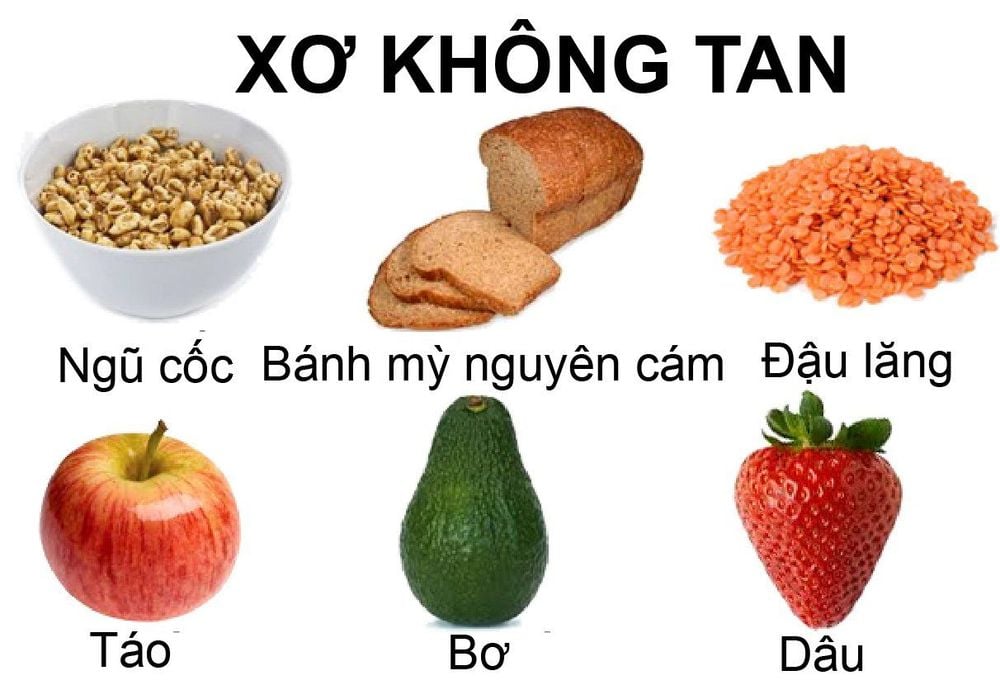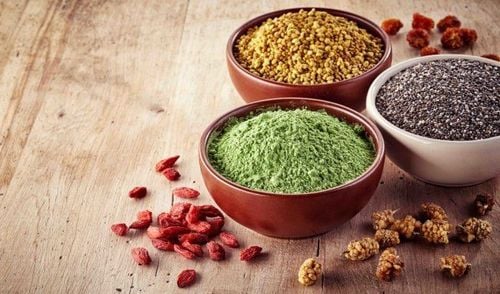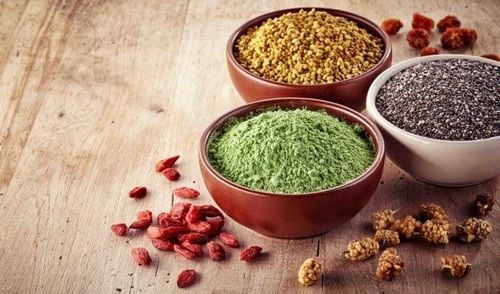This is an automatically translated article.
The article was professionally consulted with Master, Doctor Nguyen Tung Hoanh- Department of Resuscitation - Emergency - Vinmec Nha Trang International General Hospital.Dietary fiber is found in plant-based foods, and there are two types of fiber, soluble and insoluble. Insoluble fiber also plays an important role in weight management by suppressing hunger pangs.
1. What is insoluble fiber?
Insoluble fiber is a type of fiber that does not dissolve in water and is not broken down by intestinal bacteria and is not absorbed into the bloodstream. This type of fiber is found in whole grains, nuts, fruits, and vegetables.2. Foods that provide insoluble fiber
Insoluble fiber is abundant in edible plants, especially nuts and grains. In addition, vegetables and fruits also contain a lot of insoluble fiber.Fruits rich in fiber can include avocado, apple, pear, raspberry, banana... They contain from 2 - 7% fiber, which includes both soluble fiber and insoluble fiber .
Vegetables containing insoluble fiber are mostly familiar such as artichokes (more than 5%), broccoli (more than 3%), Brussels sprouts (more than 3%), carrots (nearly 3%), radishes white (nearly 3%), legumes, especially peas (more than 8%) and chickpeas (nearly 8%).
Nuts contain a lot of fiber, and are a very valuable source of insoluble fiber such as oats (more than 10%), popcorn (14.5%), almonds (more than 12%), chia seeds (34.4%).
In addition, dark chocolate also contains more than 10% fiber, so if you need to add fiber and don't want your meal to be full of vegetables, you can think of this food.

Trái cây giàu chất xơ nhất có thể kể đến bơ, táo, lê
3. Benefits of Insoluble Fiber
There are a few typical benefits of insoluble fiber, such as helping you control weight, suppress hunger, prevent constipation.3.1 Weight Loss Like soluble fiber, insoluble fiber also plays an important role in weight management by suppressing hunger pangs.
Furthermore, certain types of insoluble fiber also act as a natural laxative, helping to reduce the incidence of constipation and diverticulitis. This also makes it easier for you to lose weight.
3.2 Improve digestive function Consuming more insoluble fiber improves the function of the digestive system. Besides, you can eliminate constipation by increasing the amount of insoluble fiber in your daily diet. Not only that, insoluble fiber can also improve bowel related health problems such as constipation and hemorrhoids.

Tiêu thụ nhiều chất xơ không hòa tan giúp cải thiện chức năng của hệ tiêu hóa
4. How to add insoluble fiber
You can add insoluble fiber to your daily diet by:Use toast with oatmeal, or high-fiber cereals for breakfast. When you bake cakes, limit the use of all-purpose flour, and use whole wheat flour instead. Stock up on nuts for healthy snacks. Buy cauliflower and green beans, then wash and cut into small pieces to boil or eat raw for snacks or as a main course.
5. Some notes when using fiber
It is better to use natural fiber than processed fiber, because fiber in nature has two types, soluble in water and insoluble in water. Do not eat fiber that is overcooked because it turns into powdered sugar. It is best to eat vegetables that are barely cooked, especially raw and crunchy vegetables. Wash fruits and vegetables before use to remove pesticides. It is best to eat fruit that should not be peeled because this layer is high in water-insoluble fiber. Fiber in the diet increases slowly so that the digestive system can adapt to this indigestible food and avoid bloating. Drink plenty of water, as fiber absorbs quite a bit of water in the intestines.Please dial HOTLINE for more information or register for an appointment HERE. Download MyVinmec app to make appointments faster and to manage your bookings easily.













